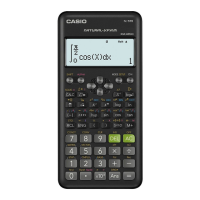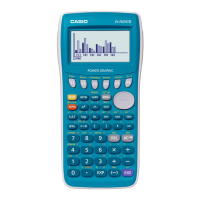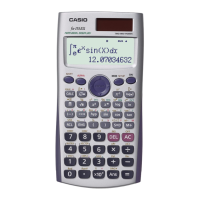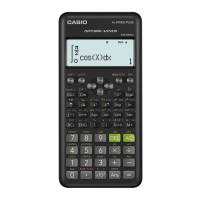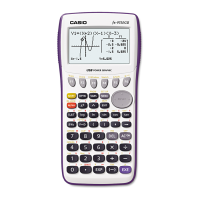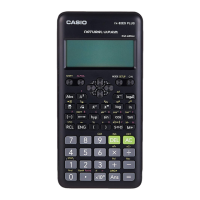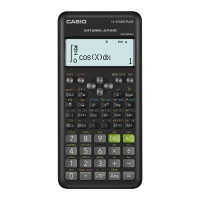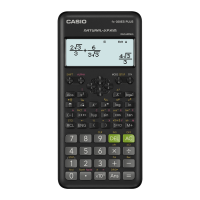Do you have a question about the Casio V.P.A.M. fx-992S and is the answer not in the manual?
Explains the meaning of key markings and their color coding for different functions.
Details how to specify calculation modes like COMP, SD, LR, CMPLX, and BASE-N.
Explains the V.P.A.M. system for formula input and the calculation priority sequence.
Covers standard and independent memory usage for storing values and results.
Specifies the input/output and internal calculation digit limits for mantissa and exponent.
Explains the calculator's range for numbers and how scientific notation is displayed.
Explains the symbols indicating errors or overflow and how to clear them.
Details the calculator's power system, battery replacement, and auto power-off function.
Lists the technical specifications of the calculator, including functions and ranges.
Provides instructions on how to correctly insert the unit into its hard case.
Explains how to perform basic calculations, including those with parentheses.
Details how to perform calculations using constants, indicated by the 'K' sign.
Explains how to perform calculations using variable and independent memories.
Covers performing calculations with fractions and converting between fraction and decimal.
Explains various percentage calculation methods, including add-on and discount.
Details how to use engineering symbols and modes for scientific calculations.
Explains conversions between binary, octal, decimal, and hexadecimal number systems.
Describes how to obtain negative values and two's complement representation.
Covers performing calculations within binary, octal, decimal, and hexadecimal systems.
Explains the use of logical operators (AND, OR, XOR, NOT) in various number systems.
Explains how to recall 128 scientific constants stored in memory using the CONST key.
Explains how to convert between sexagesimal (degrees, minutes, seconds) and decimal formats.
Covers the use of trigonometric and inverse trigonometric functions in various angle units.
Details the use of hyperbolic and inverse hyperbolic functions.
Explains common/natural logarithms, exponents, powers, and roots.
Covers miscellaneous functions like FIX, SCI, NORM, RND, RAN#, and ENG modes.
Explains conversions between polar and rectangular coordinate systems.
Details how to calculate permutations and combinations.
Explains basic complex number arithmetic, memory usage, and display indicators.
Covers calculating arguments and absolute values of complex numbers.
Explains how to calculate sample and population standard deviations and related statistical values.
Details how to perform linear, exponential, and logarithmic regression analyses.
Explains the process and formulas for linear regression analysis.
Details the process and formulas for exponential regression analysis.
Explains the process and formulas for logarithmic regression analysis.
Covers the process and formulas for power regression analysis.
| Model | fx-992S |
|---|---|
| Type | Scientific |
| Display Type | LCD |
| Power Source | Solar & Battery |
| Weight | 105 g |
| Special Features | V.P.A.M. (Visually Perfect Algebraic Method) |
| Power | LR44 |
| Functions | Trigonometric, Exponential, Logarithmic |
